-
BackX
-
Components
-
-
Category
-
Semiconductors
- Diodes
- Thyristors
-
Electro-insulated Modules
- Electro-insulated Modules | VISHAY (IR)
- Electro-insulated Modules | INFINEON (EUPEC)
- Electro-insulated Modules | Semikron
- Electro-insulated Modules | POWEREX
- Electro-insulated Modules | IXYS
- Electro-insulated Modules | POSEICO
- Electro-insulated Modules | ABB
- Electro-insulated Modules | TECHSEM
- Go to the subcategory
- Bridge Rectifiers
-
Transistors
- Transistors | GeneSiC
- SiC MOSFET Modules | Mitsubishi
- SiC MOSFET Modules | STARPOWER
- Module SiC MOSFET ABB’s
- IGBT Modules | MITSUBISHI
- Transistor Modules | MITSUBISHI
- MOSFET Modules | MITSUBISHI
- Transistor Modules | ABB
- IGBT Modules | POWEREX
- IGBT Modules | INFINEON (EUPEC)
- Silicon Carbide (SiC) semiconductor elements
- Go to the subcategory
- Gate Drivers
- Power Blocks
- Go to the subcategory
- Electrical Transducers
-
Passive components (capacitors, resistors, fuses, filters)
- Resistors
-
Fuses
- Miniature Fuses for electronic circuits - ABC & AGC Series
- Tubular Fast-acting Fuses
- Time-delay Fuse Links with GL/GG & AM characteristics
- Ultrafast Fuse Links
- Fast-acting Fuses (British & American standard)
- Fast-acting Fuses (European standard)
- Traction Fuses
- High-voltage Fuse Links
- Go to the subcategory
- Capacitors
- EMI Filters
- Supercapacitors
- Power surge protection
- Go to the subcategory
-
Relays and Contactors
- Relays and Contactors - Theory
- 3-Phase AC Semiconductor Relays
- DC Semiconductor Relays
- Controllers, Control Systems and Accessories
- Soft Starters and Reversible Relays
- Electromechanical Relays
- Contactors
- Rotary Switches
-
Single-Phase AC Semiconductor Relays
- AC ONE PHASE RELAYS 1 series| D2425 | D2450
- One phase semiconductor AC relays CWA and CWD series
- One phase semiconductor AC relays CMRA and CMRD series
- One phase semiconductor AC relays - PS series
- Double and quadruple semiconductor AC relays - D24 D, TD24 Q, H12D48 D series
- One phase semiconductor relays - gn series
- Ckr series single phase solid state relays
- One phase AC semiconductor relays for DIN bus - ERDA I ERAA series
- 150A AC single phase relays
- Rail Mountable Solid State Relays With Integrated Heat Sink - ENDA, ERDA1 / ERAA1 series
- Go to the subcategory
- Single-Phase AC Semiconductor Relays for PCBs
- Interface Relays
- Go to the subcategory
- Cores and Other Inductive Components
- Heatsinks, Varistors, Thermal Protection
- Fans
- Air Conditioning, Accessories for Electrical Cabinets, Coolers
-
Batteries, Chargers, Buffer Power Supplies and Inverters
- Batteries, Chargers - Theoretical Description
- Modular Li-ion Battery Building Blocks, Custom Batteries, BMS
- Batteries
- Battery Chargers and Accessories
- Uninterruptible Power Supply and Buffer Power Supplies
- Inverters and Photovoltaic Equipments
- Energy storage
- Fuel cells
- Lithium-ion batteries
- Go to the subcategory
-
Automatics
- Futaba Drone Parts
- Limit Switches, Microswitches
- Sensors, Transducers
-
Infrared Thermometers (Pyrometers)
- IR-TE Series - Water-proof Palm-sized Radiation Thermometer
- IR-TA Series - Handheld Type Radiation Thermometer
- IR-H Series - Handheld Type Radiation Thermometer
- IR-BA Series - High-speed Compact Radiation Thermometer
- IR-FA Series - Fiber Optic Radiation Thermometer
- IR-BZ Series - Compact Infrared Thermometers
- Go to the subcategory
- Counters, Time Relays, Panel Meters
- Industrial Protection Devices
- Light and Sound Signalling
- Thermographic Camera
- LED Displays
- Control Equipments
-
Recorders
- Hybrid Recorders - AL3000 Series | CHINO
- Graphic Recorder - KR2000 Series | CHINO
- Ubiquitous Recorders - KR5000 Series | CHINO
- Palm-sized Temperature/Humidity Meters - HN-CH Series | CHINO
- Consumables for Recorders
- 71VR1 - Compact Paperless Recorder | M-SYSTEM
- Graphic Recorder - KR3000 Series | CHINO
- PC Recorders - R1M Series | M-SYSTEM
- PC Recorders - R2M Series | M-SYSTEM
- PC Recorders - RZMS Series | M-SYSTEM
- PC Recorders - RZUS Series | M-SYSTEM
- Go to the subcategory
- Go to the subcategory
-
Cables, Litz wires, Conduits, Flexible connections
- Wires
- Litz wires
- Cables for extreme applications
- Sleevings
-
Braids
- Flat Braids
- Round Braids
- Very Flexible Flat Braids
- Very Flexible Round Braids
- Cylindrical Cooper Braids
- Cylindrical Cooper Braids and Sleevings
- Flexible Earthing Connections
- Galvanized and Stainless Steel Cylindrical Braids
- PCV Insulated Copper Braids (temp. up to 85C)
- Flat Aluminium Braids
- Junction Set - Braids and Tubes
- Go to the subcategory
- Traction Equipment
- Cable Terminals
- Flexible Insulated Busbars
- Flexible Multilayer Busbars
- Cable Duct Systems
- Hoses
- Go to the subcategory
- View all categories
-
Semiconductors
-
-
- Suppliers
-
Applications
- CNC Machine Tools
- DC and AC Drives (Inverters)
- Energetics
- Energy bank
- Equipment and Components for Hazardous Areas [Ex]
- Equipment for Distribution, Control and Telecommunications Cabinets
- HVAC Automation
- Induction Heating
- Industrial Automation
- Industrial Protective Devices
- Machines for Drying and Wood Processing
- Machines for Thermoforming Plastics
- Mining, Metallurgy and Foundry
- Motors and Transformers
- Power Supplies (UPS) and Rectifier Systems
- Printing
- Temperature Measurement and Regulation
- Test and Laboratory Measurements
- Tram and Railway Traction
- Welding Machines
-
Assembly
-
-
Inductors
-
-
Induction devices
-
-
https://www.dacpol.eu/pl/naprawy-i-modernizacje
-
-
Service
-
- Contact
- Zobacz wszystkie kategorie
Thermal Greases
Thermal paste is a substance used to improve thermal conductivity between two surfaces. It is particularly useful in electronic applications, where it can be applied between a processor and a heatsink or between other electronic components and radiators or heat sinks.
Thermal paste...
Thermal paste is a substance used to improve thermal conductivity between two surfaces. It is particularly useful in...
| Image | View the product | No. Manufacturer | ||||||||
|---|---|---|---|---|---|---|---|---|---|---|
| picture_as_pdf |
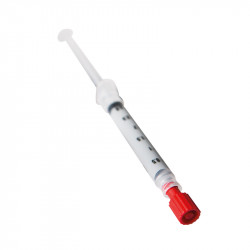
|
Kerafol | Thermal paste | SEE IT | -- | On Order | -- | -- | -- | -- |
| picture_as_pdf |
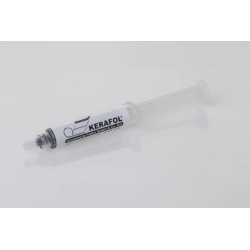
|
Kerafol | Pasta termoprzewodząca KERATHERM KP12 5ml | SEE IT | 1.00KP12.SP.00000.00 | 25 | -- | 10 W/mK | ||
| picture_as_pdf |
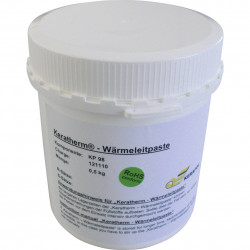
|
Kerafol | Thermal paste Kerafol KERATHERM® KP98 500g | SEE IT | KP98.500G | On Order | -- | -- | -- | -- |
| picture_as_pdf |
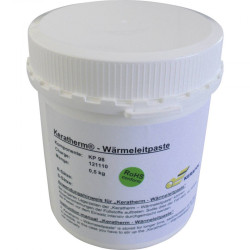
|
Kerafol | Pasta termoprzewodząca KERATHERM KP97 500g | SEE IT | -- | On Order | -- | |||
| -- |
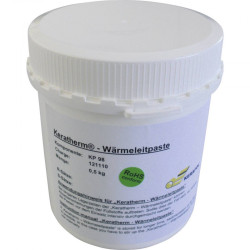
|
Kerafol | Pasta termoprzewodząca KERATHERM KP99 500g | SEE IT | KP99.500 | On Order | -- | |||
| picture_as_pdf |
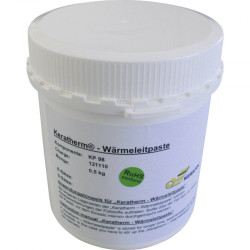
|
Kerafol | Pasta termoprzewodząca KERATHERM KP12 500g | SEE IT | KP12.500 | 88 |
Thermal paste is a substance used to improve thermal conductivity between two surfaces. It is particularly useful in electronic applications, where it can be applied between a processor and a heatsink or between other electronic components and radiators or heat sinks.
Thermal paste works by filling microscopic gaps and irregularities on surfaces, eliminating the layer of air that would act as a thermal insulator. This improves the contact between electronic components and cooling systems, resulting in more efficient heat dissipation. As a result, stable operating temperatures for electronic components can be maintained, which is crucial for their performance and durability.
Thermal paste is used in various fields, primarily in electronics, to enhance thermal conductivity between two surfaces. Here are the main applications of thermal pastes:
-
Cooling computer processors: In personal computers and other electronic devices, thermal pastes are applied between the processor and a heatsink or cooling system. This helps efficiently transfer heat from the processor to the cooling system, preventing the system from overheating.
-
Integrated circuits (ICs): For components like integrated circuits that generate heat during operation, thermal pastes are used to improve heat conduction between the IC and radiators or heat sinks.
-
Laptops and mobile devices: In portable devices such as laptops, smartphones, and tablets, thermal pastes aid in effectively cooling processors and other components that may generate significant heat.
-
LED light sources: In LED lighting applications, where light-emitting diodes can generate heat, thermal pastes assist in efficient heat dissipation, affecting the performance and longevity of the LEDs.
-
Automotive electronics: In cars and other vehicles, thermal pastes are used in electronic systems to provide effective cooling in varying temperature conditions.
-
Industrial applications: In the industry, especially in the production of electronics, thermal pastes are utilized in various applications such as solar panels, medical devices, and telecommunications systems.
Thermal pastes vary in chemical composition and properties. They often contain thermally conductive substances such as metal or ceramics, combined with a carrier (e.g., silicone). The choice of the right paste depends on the specific application, the type of electronic components involved, and thermal conductivity requirements. It is advisable to check the manufacturer's specifications and application recommendations.



